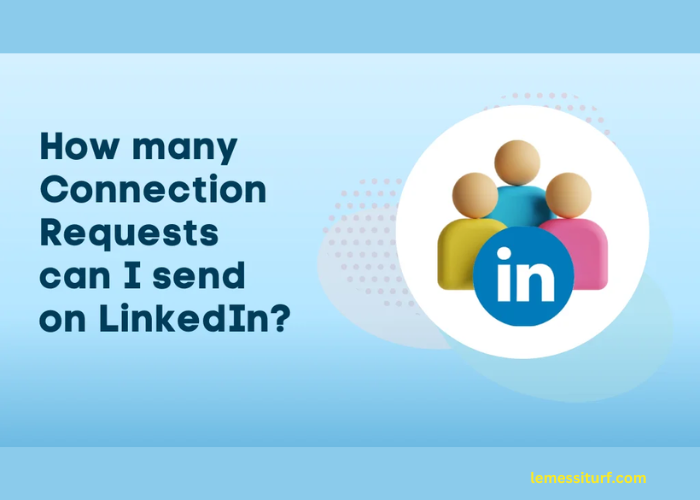LinkedIn has become an essential platform for professionals looking to expand their network and create valuable connections. However, many users face challenges when it comes to the LinkedIn connection request limit.
In this article, we’ll explore what this limit means, how it affects your networking efforts, and strategies to maximize your connections while staying within the boundaries set by LinkedIn.
Understanding the LinkedIn Connection Request Limit
LinkedIn implements a connection request limit to prevent spamming and maintain the quality of connections within the platform. While the exact limit is not publicly disclosed by LinkedIn, it is believed to be around 3,000 to 5,000 connections.
Once you reach this limit, you’ll need to wait for some of your pending requests to be accepted before sending out new ones.
The Impact of the LinkedIn Connection Request Limit on Your Networking
The LinkedIn connection request limit can pose challenges for professionals who actively seek to expand their network. Here are a few ways in which the limit can impact your networking efforts:
- Slows Down Connection Growth: With a limit in place, you may need to be more selective in your connection requests, which can slow down the overall growth of your network.
- Requires Strategic Planning: To make the most of your available requests, you’ll need to prioritize and strategize your connection efforts, focusing on individuals who are most relevant to your professional goals.
- Encourages Quality Over Quantity: The limit encourages users to focus on building meaningful connections rather than simply amassing a large number of contacts.
Strategies to Optimize Your LinkedIn Connections
Despite the LinkedIn connection request limit, there are several strategies you can employ to optimize your connections and make the most of your networking efforts:
Buy LinkedIn Impressions
One effective way to quickly improve your LinkedIn profile and attract more connections is by buying organic LinkedIn impressions from reputable sources. When you purchase LinkedIn impressions, your profile gains increased visibility and credibility, making it more appealing to potential connections.
By investing in LinkedIn impressions, you can accelerate the growth of your professional network and create valuable opportunities for collaboration and career advancement. Don’t miss out on the chance to improve your LinkedIn profile and take your networking to the next level!
Engage With Existing Connections
Nurture your current connections by engaging with their content, leaving thoughtful comments, and sharing relevant articles or insights. This helps strengthen your relationships and increases the likelihood of your connections introducing you to others in their network.
Participate in Relevant Groups
LinkedIn groups provide an excellent opportunity to connect with professionals in your industry or with similar interests. Engage in group discussions, share valuable content, and build relationships with other members.
Personalize Connection Requests
Instead of sending generic requests, take the time to personalize each one, explaining why you’d like to connect and how you can add value to the other person’s network.
Improve Your LinkedIn Profile to Attract More Connections
One of the most effective ways to maximize your connections while staying within the LinkedIn connection request limit is to optimize your profile. A well-crafted, compelling LinkedIn profile can attract potential connections to reach out to you, rather than you having to initiate the request.
Here’s how you can improve your LinkedIn profile:
- Write A Strong Headline: Your headline should clearly communicate your professional identity and value proposition. Use keywords relevant to your industry to increase your visibility in search results.
- Craft Compelling Story: Your summary should tell your personal and professional story, highlight your key accomplishments, and showcase your unique skills and expertise. Use this space to express your personality and demonstrate how you can add value to your connections.
- Showcase Your Experience & Skills: Ensure your work experience and skills sections are up to date and accurately reflect your professional background. Use bullet points to highlight your key achievements and quantify your results wherever possible.
- Obtain Recommendations: Seek out recommendations from colleagues, clients, or managers who can vouch for your skills and character. Endorsements also help validate your expertise in specific areas.
By implementing these strategies and continuously improving your LinkedIn profile, you’ll attract more organic connection requests, allowing you to expand your network without solely relying on outbound requests.
The Benefits of Staying Within the LinkedIn Connection Request Limit
While the LinkedIn connection request limit may seem restrictive, it ultimately benefits users by:
- Maintaining the Quality of Connections: By preventing users from sending out mass, impersonal requests, the limit helps ensure that connections on the platform are genuine and valuable.
- Encouraging Meaningful Interactions: With a limit in place, users are more likely to engage in thoughtful, targeted networking, leading to more meaningful professional relationships.
- Preventing Spam and Maintaining Trust: The limit helps combat spam and maintains the trust and credibility of the LinkedIn platform, ensuring that users have a positive networking experience.
Conclusion
The LinkedIn connection request limit is designed to foster a high-quality networking experience for all users. By understanding the impact of this limit and employing strategies to optimize your connections, you can continue to grow your professional network effectively.
Remember to focus on personalizing your requests, engaging with your existing connections, participating in relevant groups, and continuously improving your LinkedIn profile.
By staying within the connection request limit and prioritizing quality over quantity, you’ll build a strong, valuable network that can open up new opportunities and support your professional growth.
